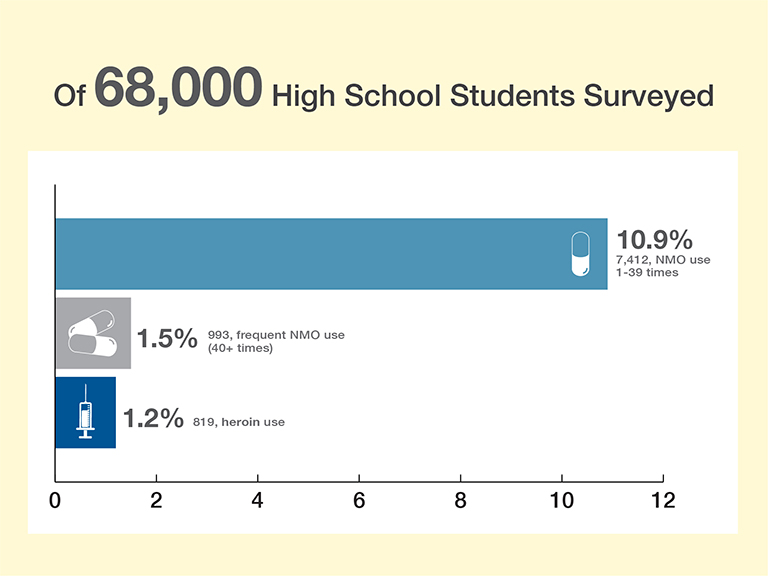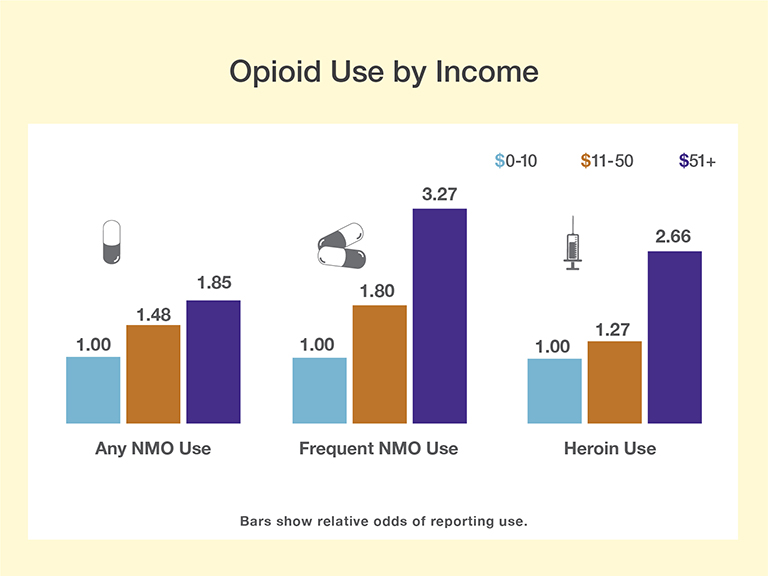
Dr. Joseph Palamar and a team of researchers at New York University studied nonmedical use of prescription opioids (NMO) and use of heroin among 68,000 high-school seniors who participated in the NIDA-funded Monitoring the Future Study (MTF) between 2009 and 2013.
This research showed that:
- NMO use was 10 times more common than heroin use.
- Strong correlations existed between NMO and heroin use.
- Associations existed between NMO/heroin use and gender, race, and student income.

Of 68,000 high school students surveyed, 10.9 percent reported NMO use 1-39 times, 1.5 percent reported frequent NMO use (40+ times), and 1.2 percent reported having used heroin.

NMO use was much more prevalent among the 819 students who had used heroin than among the total population of students (77.3 percent vs. 12.4 percent). Heroin use was much more prevalent among the 993 students who reported frequent NMO use than among the total population of students (23.2 percent vs. 1.2 percent).

The researchers compared the likelihood of opioid use by female and male students. They estimated that, adjusting for other factors that can influence drug use, females were 79 percent as likely as males to report NMO use, 59 percent as likely to report frequent NMO use, and 57 percent as likely to report heroin use.

Blacks and Hispanics were less likely than Whites to use opioids. The differences were greatest for frequent NMO use, intermediate for lifetime NMO use, and smallest for lifetime heroin use. Blacks were least likely to report any of the three types of drug use.

Students with higher income from part-time employment were more likely than those with lower income to report NMO or heroin use. The association with income was strongest for frequent NMO use and stronger for heroin use than for lifetime NMO use. Income had the smallest effect on lifetime NMO use.
The researchers note that their analysis did not include data for similarly aged adolescents not enrolled in school. Some experts predict that NMO and heroin use may be higher among those young people.
This study was supported by NIH grant DA-038800.
Source
Palamar, J.J., Shearston, J.A., Dawson, E.W., et al. Nonmedical opioid use and heroin use in a nationally representative sample of U.S. high school seniors. Drug and Alcohol Dependence 158:132-138, 2016. Full text
